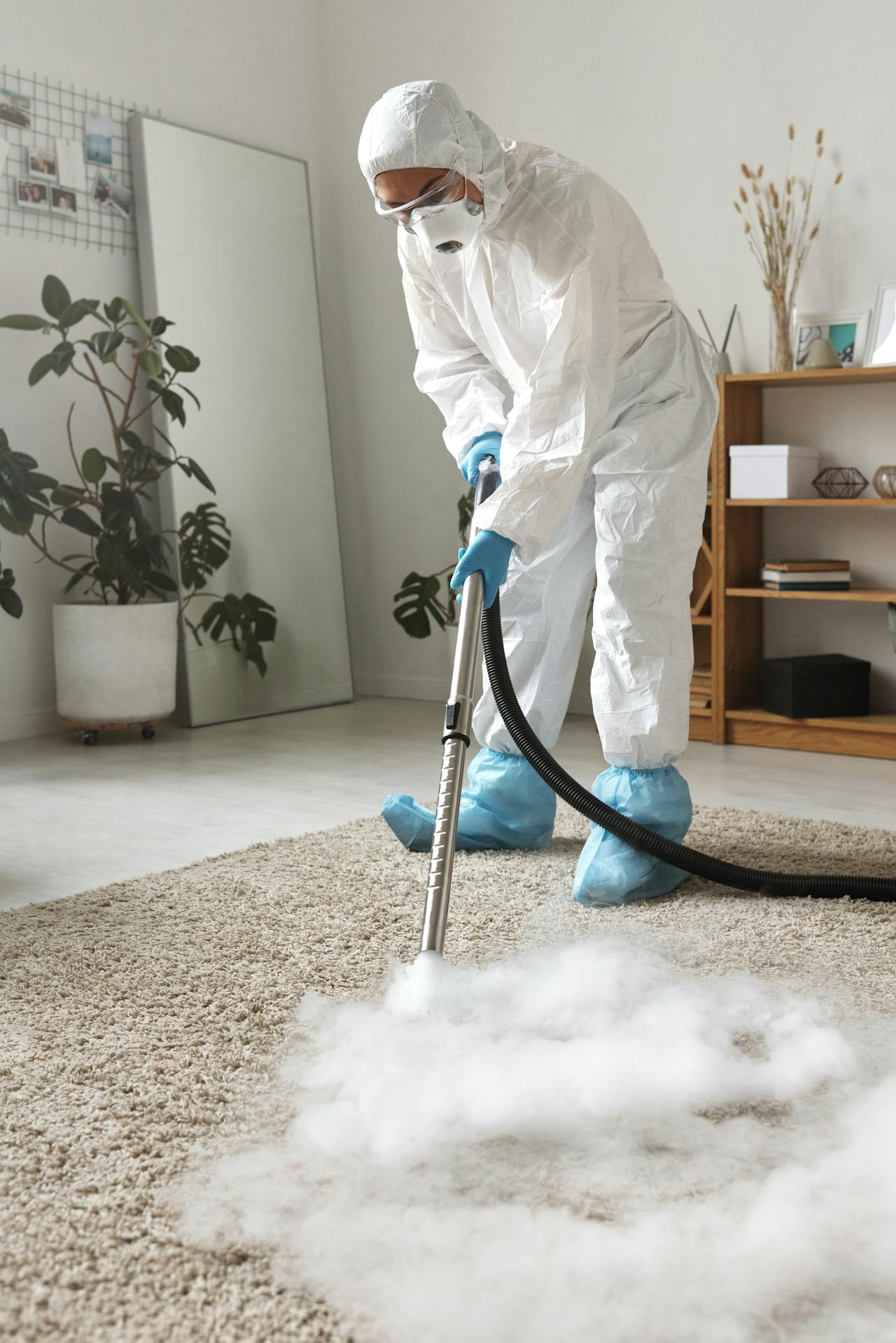PERC CANCER LAWSUITS
PERC Exposure Lawsuits
As more workers and community members develop illnesses tied to long-term PCE exposure, lawsuits against employers, landlords, and chemical manufacturers are gaining traction. PERC cancer lawsuits not only seek financial compensation but also expose the negligence of companies that prioritized profits over public health.
What Is PERC and Why Is It Dangerous?
Perchloroethylene (also known as tetrachloroethylene or PCE) has been a staple solvent in the dry cleaning industry since the 1950s. While effective at removing stains, its dangers are now well documented:
-
Carcinogen classification: The International Agency for Research on Cancer (IARC) classifies PERC as a probable human carcinogen (Group 2A).
-
OSHA regulation: Occupational Safety and Health Administration (OSHA) has set exposure limits due to its toxicity.
-
Health risks: Long-term exposure increases the likelihood of developing serious diseases, including:
-
Bladder cancer
-
Kidney cancer
-
Esophageal cancer
-
Liver cancer
-
Non-Hodgkin’s lymphoma
-
Multiple myeloma
-
Workers are most at risk through inhalation of vapors and direct skin contact, but residents living near dry cleaning facilities may also be exposed via contaminated air, soil, and groundwater.
American workers in the dry cleaning business and other industries who work around PCE (Tetrachloroethylene) may be at risk of chronic exposure and may develop related diseases and illnesses. PCE, or PERC, is frequently used in dry cleaning operations, and employees are urged to monitor their health conditions.
Tetrachloroethylene may also be inhaled from accidental spills or product use in small, enclosed spaces, and landfills in which it may have been disposed. PCE is released into the air and water by evaporation or emissions from industrial and dry-cleaning plants and may lead to toxic exposure.
Workers may be regularly exposed in specific workplaces, and employers have a responsibility to protect employees and provide a safe work environment. Should any employer fail in this regard and a worker falls ill as a result of workplace toxin exposure, an investigation may be necessary, a claim can be filed against the negligent company, and injured workers can be awarded proper compensation for related expenses and pain and suffering.
Joe Lyon is a highly-rated Toxic Tort Attorney, representing plaintiffs nationwide in a wide variety of civil litigation claims.
How PERC Exposure Occurs
Occupational Exposure
Employees in dry cleaning shops frequently:
-
Handle PERC without proper protective gear.
-
Inhale vapors during cleaning and pressing.
-
Work in poorly ventilated facilities where chemicals linger.
People with the greatest chance of being exposed are those who work with it on a daily basis. According to the National Institute for Occupational Safety and Health (NIOSH), more than 650,000 U.S. workers may be exposed to PERC or PCE at the workplace.
Those most affected are likely in the dry cleaning business and industrial sites that may have levels of PCE higher than background levels. If a dry cleaning business has spilled or leaked PCE on the ground, there may also be contaminated groundwater, and entire communities may be at risk.
Breathing contaminated air and drinking water are the two most likely ways people are exposed to PCE. Tetrachloroethylene enters the body when contaminated air is inhaled or when food or water is contaminated with the chemical and consumed.
If PCE is trapped against the skin, it can pass through into the body. Dermal contact may be a route of PCE exposure in the workplace and among the general public. However, the chemical is less easily absorbed through the skin than through inhalation and oral exposure routes.
Understanding PCE (Tetrachloroethylene)
PCE (Tetrachloroethylene), also known as PERC or perchloroethylene, is a man-made chemical widely used for dry cleaning clothes and degreasing metal. It is also used to make other chemicals and can be found in some household products such as water repellents, silicone lubricants, spot removers, adhesives and wood cleaners.
PCE easily evaporates into the air and has a sharp, sweet odor. People can be exposed to PCE from household products, dry cleaning products and at the workplace. PERC can evaporate into the air during dry cleaning operations and during industrial use. It can also evaporate into the air if it is not properly stored or is spilled. If it is spilled or leaked on the ground, it may contaminate groundwater.

PERC Exposure Cancer
Any symptoms of PCE exposure and development of a related illness will depend on the dose, the duration and frequency of exposure. As a general rule, young children, the elderly and people with chronic health issues are more at risk to chemical exposures.
Exposure to high concentrations of PCE in closed, poorly ventilated areas can cause dizziness, headache, sleepiness, confusion, nausea, difficulty in speaking and walking, unconsciousness and even death. Skin irritation may result from repeated or extended contact.
A U.S. National Toxicology Program Report on Carcinogens noted that PCE has been shown to cause liver tumors and kidney tumors in animal studies. The results of one study suggests that the risk of epilepsy and cervical cancer may be increased among adults exposed to PCE-contaminated drinking water during gestation and early childhood. Occupational studies show PERC exposure can have long-term harmful health effects on the vision or may cause bladder cancer.
Preventing PERC Exposure
The National Institute for Occupational Safety and Health (NIOSH) recommends that PCE be handled as a potential carcinogen and that levels in workplaces should be kept as low as possible. If you suspect exposure, medical professionals can test for PCE exposure by measuring the amount of the chemical in the breath. Because PCE is stored in the body’s fat and slowly released into the bloodstream, it can be detected for weeks following a heavy exposure. It can also be detected in the blood.
No medical treatment can remove PCE from the body, but the body does break down and remove these chemicals over time in most cases. Avoiding any toxic exposure is recommended.
CONTACT THE LYON FIRM TODAY
Please complete the form below for a FREE consultation.
ABOUT THE LYON FIRM
Joseph Lyon has 17 years of experience representing individuals in complex litigation matters. He has represented individuals in every state against many of the largest companies in the world.
The Firm focuses on single-event civil cases and class actions involving corporate neglect & fraud, toxic exposure, product defects & recalls, medical malpractice, and invasion of privacy.
NO COST UNLESS WE WIN
The Firm offers contingency fees, advancing all costs of the litigation, and accepting the full financial risk, allowing our clients full access to the legal system while reducing the financial stress while they focus on their healthcare and financial needs.

Why Hire a Toxic Exposure Lawyer?
PERC cancer lawsuits involve complex medical evidence and require proving a direct link between exposure and cancer. Defendants often include large corporations and insurers with vast legal resources. An experienced toxic exposure lawyer can:
-
Investigate exposure history and workplace conditions.
-
Retain medical and scientific experts to testify.
-
Build a strong case against negligent employers, landlords, or chemical manufacturers.
-
Pursue compensation through settlement or trial.
CONTACT THE LYON FIRM TODAY
Recent PERC Cancer Lawsuits
Numerous toxic exposure lawsuits have been filed across the country, targeting both employers and chemical manufacturers. Some notable cases involve:
-
Workers filing occupational cancer claims after decades in the dry-cleaning industry. Plaintiffs argue they were never properly warned or protected from PERC’s dangers.
-
Community lawsuits where neighborhoods near dry cleaning facilities suffered from contaminated groundwater and air, leading to clusters of cancer diagnoses.
-
Environmental remediation cases in which landlords and business owners were sued for failing to prevent toxic vapor intrusion into residential and commercial buildings.
PERC Exposure FAQs
Workers in dry cleaning facilities, especially long-term employees, face the highest risk. Nearby residents exposed to contaminated groundwater or vapor intrusion are also vulnerable.
Research has connected PERC exposure to bladder, kidney, esophageal, and liver cancers, as well as lymphomas and multiple myeloma.
Yes. Families may pursue wrongful death claims to recover damages such as funeral costs, lost income, and loss of companionship.
Yes. Lawsuits have been filed against chemical manufacturers for failing to provide adequate warnings about PERC’s carcinogenic risks.
Toxic Exposure Information Center
- Roundup
- Isocyanate Exposure
- Baby Powder
- Asbestos
- Silica
- Beryllium
- Methylene Chloride
- Formaldehyde
- TCE
- Vinyl Chloride
- Ammonia
- Aplastic Anemia
- Asphalt
- C8 Dupont Settlement
- Carbon Monoxide
- Chlorine Injury
- Dry Cleaning Workers
- Gadolinium
- Toluene
- Xylene
- Radiation
- Mold
- Hodgkin’s Lymphoma
- Lead Paint Poisoning
- Multiple Myeloma
- Myelodysplastic Syndrome
- Interstitial Lung Disease
- Leukemia
- Occupational Lung Disease
- Sarcoidosis
- Pneumoconiosis
- Chemical Inhalation
- Hydrogen Sulfide
- Sulfuric Acid
- Hydrochloric Acid Exposure
- Paint Factory Workers
- Popcorn Lung Disease
Request A Free Consultation
-
-
Answer a few general questions.
-
A member of our legal team will review your case.
-
We will determine, together with you, what makes sense for the next step for you and your family to take.
-